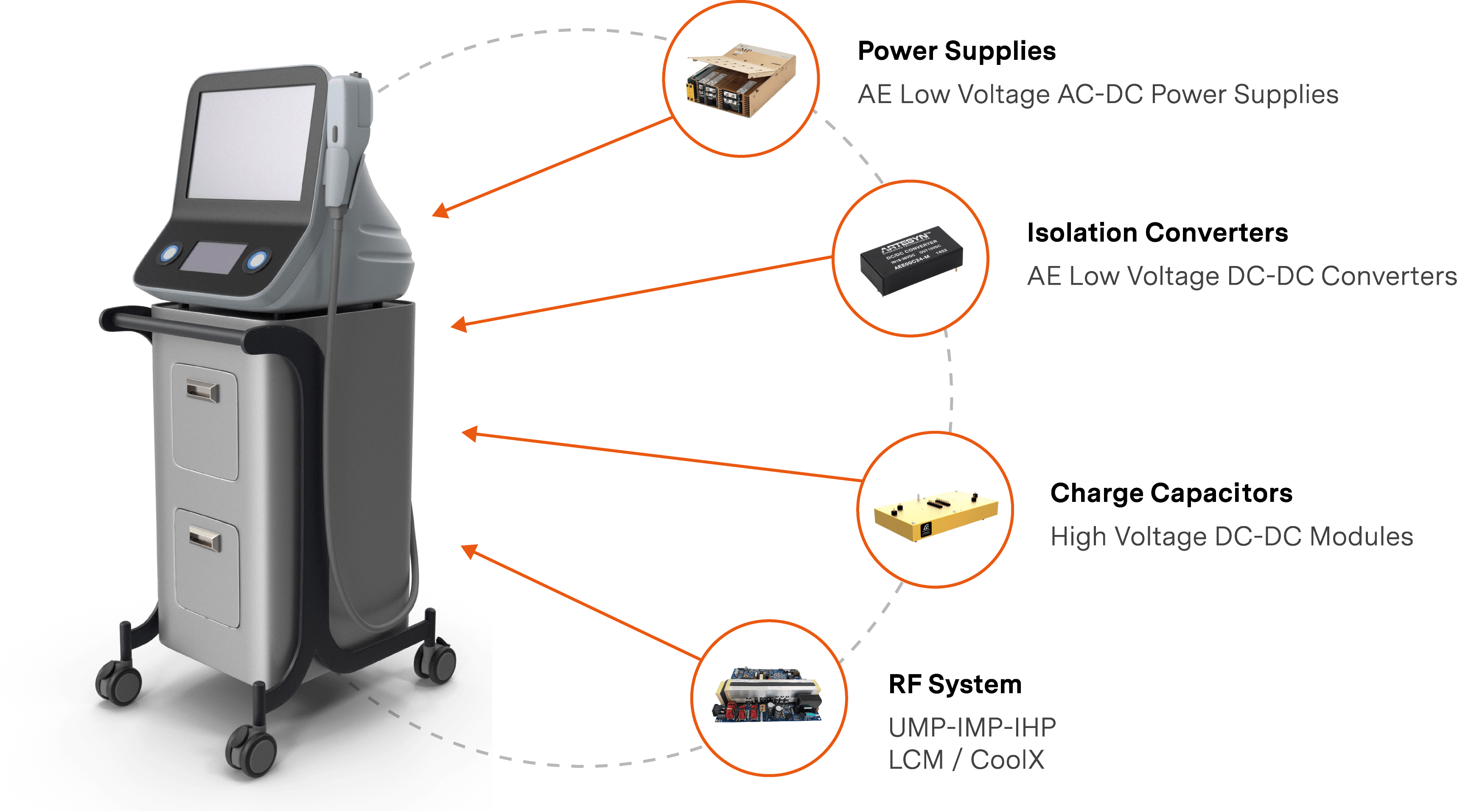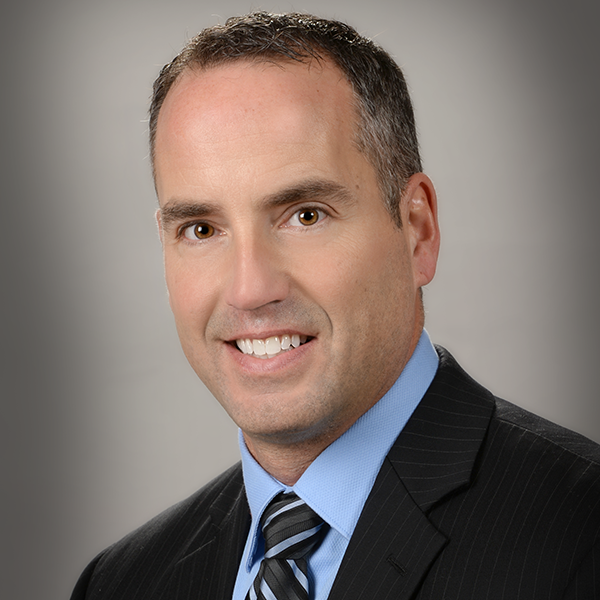Exploring Electrosurgery: Current Trends and Challenges
投稿 4月 12, 2024 によって Todd Huston
Introduction
Electrosurgery has revolutionized the field of medicine, offering precise and efficient methods for tissue cutting, coagulation and ablation. With advancements in technology, new trends are emerging and pushing the boundaries of what's possible in surgical interventions. Among these trends, pulsed field ablation (PFA) stands out as a promising technique with the potential to redefine electrosurgical procedures. In this blog, we'll delve into the current trends in electrosurgery, with a special focus on pulsed field ablation.
Electrosurgery: A Brief Overview
Electrosurgery involves the application of high-frequency electrical current to biological tissues to achieve a variety of surgical outcomes. Traditionally, electrosurgery techniques include cutting, coagulation and desiccation. These methods have been widely used across various medical specialties, including general surgery, dermatology, gynecology and cardiology.
Current Trends in Electrosurgery
a) Minimally invasive surgery (MIS): One of the prevailing trends in modern surgery is the shift towards minimally invasive techniques. Electrosurgery plays a crucial role in enabling minimally invasive procedures by offering precise tissue manipulation and hemostasis, thereby reducing patient trauma, recovery time and hospital stays.
b) Integration with robotics: Robotics-assisted surgery has gained traction in recent years, allowing for greater precision and control during surgical procedures. Electrosurgical devices are increasingly being integrated with robotic platforms to enhance surgical outcomes and expand the scope of minimally invasive interventions.
c) Pulsed field ablation (PFA): Beyond traditional thermal ablation, such as radio frequency (RF), microwave and cryoablation, there is growing interest in high energy-based tissue management techniques. PFA represents a cutting-edge development in electrosurgery.
Pulsed Field Ablation (PFA)
Pulsed field ablation is an emerging electrosurgical technique that delivers high-energy, ultra-short electrical pulses to target tissues. The voltage required is typically in the range of 1 kV to 3 kV with currents up to 100 Amps. Pulse widths are typically in the range of 100 ns to 100 µs with burst mode frequencies up to 5 MHz. Additional research is occurring for nanosecond pulse widths with voltage up to 10 kV and even higher.
Unlike traditional continuous-wave ablation methods, PFA induces irreversible electroporation, leading to cell death and tissue necrosis while preserving the extracellular matrix and adjacent structures. This unique mechanism of action makes PFA particularly well-suited for cardiac ablation procedures, where precise lesion formation and tissue preservation are critical.
a) Applications in cardiac ablation: PFA holds great promise for the treatment of cardiac arrhythmias, including atrial fibrillation (AF). By selectively targeting myocardial tissue while sparing the surrounding structures, PFA can create durable lesions necessary for restoring normal electrical conduction pathways in the heart. Clinical studies have demonstrated the safety and efficacy of PFA in achieving pulmonary vein isolation, the cornerstone of AF ablation therapy.
• In December 2023, Medtronic announced that the United States Food and Drug Administration (FDA) approved its PulseSelect™ Pulsed Field Ablation (PFA) System for the treatment of both paroxysmal and persistent AF. This is the first PFA technology to receive FDA approval and closely follows the recent European CE (Conformité Européenne) Mark for the PulseSelect PFA system in November 2023.
• In January 2024, Boston Scientific received FDA approval for the FARAPULSE™ Pulsed Field Ablation (PFA) System.
• J&J Biosense Webster announced it will begin commercialization in Japan of the VARIPULSE® Platform and the TRUPULSE multichannel PFA generator.
• Pulse Biosciences filed an FDA 510(k) application for its CellFX® Nanosecond Pulsed Field Ablation™ (nsPFA) technology for the treatment of AF.
b) Advantages over traditional ablation techniques: PFA offers several advantages compared to conventional RF or cryoablation. Advantaged of PFA include shorter procedure times, reduced risk of collateral damage, and enhanced lesion transmurality. Additionally, PFA can be performed without the need for extensive tissue contact or cooling, making it particularly suitable for use in challenging anatomical locations or patients with structural heart disease.
c) Evolving technologies: As research in PFA continues to advance, new technologies and delivery systems are being developed to further optimize procedural outcomes and expand clinical applications. These include advanced catheter designs, real-time imaging modalities and computational modeling techniques aimed at improving lesion predictability and efficacy.

Figure 1.1 Example of power supplies and technologies used in PFA applications
Future Directions and Challenges
While the potential of pulsed field ablation in electrosurgery is promising, several challenges and opportunities lie ahead. Further clinical studies are needed to establish long-term safety and efficacy outcomes, particularly in comparison to established ablation techniques. Standardization of procedural protocols and training programs will also be essential to ensure widespread adoption and reproducibility of PFA across different healthcare settings.
Additionally, continued innovation in device technology and electrode design will be crucial to address technical limitations and optimize energy delivery parameters for specific clinical indications. PFA systems require precise control and delivery of high-voltage energy. Currently, waveforms with higher or lower voltages and various pulse wave parameters are being studied.
Precise control of the proprietary pulsed electric fields is crucial for effective target tissue ablation while minimizing damage to surrounding tissue. Developing a pulsed field ablation system that can generate and regulate pulses with high accuracy is technically demanding. The first wave of PFA systems to be FDA approved for atrial fibrillation are in the 2,000 – 3,000 volt range with typical rise and fall times in the 20 – 100 ns range (fall time at 50Ω ± 10% resistive output load) delivering up to 20 joules of energy in a single burst. The next generation of PFA systems may see voltage of 6 kV, 8 kV or even 10 kV, with pulse widths in the low nanosecond range (nanosecond PFA, or nsPFA).
Collaboration between industry partners, academic researchers and healthcare providers will be essential to drive forward the development and implementation of PFA in clinical practice.
Conclusion
Electrosurgery continues to evolve, driven by advancements in technology and a growing demand for minimally invasive surgical techniques. Pulsed field ablation represents a cutting-edge development in the field, offering a novel approach to tissue ablation with the potential to revolutionize the treatment of cardiac arrhythmias and other clinical conditions. As research and innovation in electrosurgery progress, the future holds promise for further improving patient outcomes and advancing the practice of medicine.
PFA systems require precise control and delivery of high-voltage energy. Advanced Energy is proud to partner with leading medical device companies to power the future of medicine with the broadest portfolio of medically certified precision power supplies.
Advanced Energy is already developing a next generation power platform for PFA as an extension of its present offerings in precision power. Advanced Energy will be introducing a fully standard, user configurable off-the-shelf PFA power platform. Access to and control of detailed pulse and burst parameters will allow creation of custom monopolar, bipolar, asymmetrical biphasic waveform trains with variable pulse widths and fast rise and fall times, ideal for research and development and lowest cost of ownership for commercialization.
With over 40 years of leadership in power conversion, measurement and control solutions, Advanced Energy continues to enable its customers’ innovations with a broad portfolio of medical standard, custom and configurable products. Designed to meet current and future international safety certifications, AE’s high-efficiency, high-performance power supplies feature unrivalled reliability for medical applications across the entire continuum of care.
Electrosurgery has revolutionized the field of medicine, offering precise and efficient methods for tissue cutting, coagulation and ablation. With advancements in technology, new trends are emerging and pushing the boundaries of what's possible in surgical interventions. Among these trends, pulsed field ablation (PFA) stands out as a promising technique with the potential to redefine electrosurgical procedures. In this blog, we'll delve into the current trends in electrosurgery, with a special focus on pulsed field ablation.
Electrosurgery: A Brief Overview
Electrosurgery involves the application of high-frequency electrical current to biological tissues to achieve a variety of surgical outcomes. Traditionally, electrosurgery techniques include cutting, coagulation and desiccation. These methods have been widely used across various medical specialties, including general surgery, dermatology, gynecology and cardiology.
Current Trends in Electrosurgery
a) Minimally invasive surgery (MIS): One of the prevailing trends in modern surgery is the shift towards minimally invasive techniques. Electrosurgery plays a crucial role in enabling minimally invasive procedures by offering precise tissue manipulation and hemostasis, thereby reducing patient trauma, recovery time and hospital stays.
b) Integration with robotics: Robotics-assisted surgery has gained traction in recent years, allowing for greater precision and control during surgical procedures. Electrosurgical devices are increasingly being integrated with robotic platforms to enhance surgical outcomes and expand the scope of minimally invasive interventions.
c) Pulsed field ablation (PFA): Beyond traditional thermal ablation, such as radio frequency (RF), microwave and cryoablation, there is growing interest in high energy-based tissue management techniques. PFA represents a cutting-edge development in electrosurgery.
Pulsed Field Ablation (PFA)
Pulsed field ablation is an emerging electrosurgical technique that delivers high-energy, ultra-short electrical pulses to target tissues. The voltage required is typically in the range of 1 kV to 3 kV with currents up to 100 Amps. Pulse widths are typically in the range of 100 ns to 100 µs with burst mode frequencies up to 5 MHz. Additional research is occurring for nanosecond pulse widths with voltage up to 10 kV and even higher.
Unlike traditional continuous-wave ablation methods, PFA induces irreversible electroporation, leading to cell death and tissue necrosis while preserving the extracellular matrix and adjacent structures. This unique mechanism of action makes PFA particularly well-suited for cardiac ablation procedures, where precise lesion formation and tissue preservation are critical.
a) Applications in cardiac ablation: PFA holds great promise for the treatment of cardiac arrhythmias, including atrial fibrillation (AF). By selectively targeting myocardial tissue while sparing the surrounding structures, PFA can create durable lesions necessary for restoring normal electrical conduction pathways in the heart. Clinical studies have demonstrated the safety and efficacy of PFA in achieving pulmonary vein isolation, the cornerstone of AF ablation therapy.
• In December 2023, Medtronic announced that the United States Food and Drug Administration (FDA) approved its PulseSelect™ Pulsed Field Ablation (PFA) System for the treatment of both paroxysmal and persistent AF. This is the first PFA technology to receive FDA approval and closely follows the recent European CE (Conformité Européenne) Mark for the PulseSelect PFA system in November 2023.
• In January 2024, Boston Scientific received FDA approval for the FARAPULSE™ Pulsed Field Ablation (PFA) System.
• J&J Biosense Webster announced it will begin commercialization in Japan of the VARIPULSE® Platform and the TRUPULSE multichannel PFA generator.
• Pulse Biosciences filed an FDA 510(k) application for its CellFX® Nanosecond Pulsed Field Ablation™ (nsPFA) technology for the treatment of AF.
b) Advantages over traditional ablation techniques: PFA offers several advantages compared to conventional RF or cryoablation. Advantaged of PFA include shorter procedure times, reduced risk of collateral damage, and enhanced lesion transmurality. Additionally, PFA can be performed without the need for extensive tissue contact or cooling, making it particularly suitable for use in challenging anatomical locations or patients with structural heart disease.
c) Evolving technologies: As research in PFA continues to advance, new technologies and delivery systems are being developed to further optimize procedural outcomes and expand clinical applications. These include advanced catheter designs, real-time imaging modalities and computational modeling techniques aimed at improving lesion predictability and efficacy.

Figure 1.1 Example of power supplies and technologies used in PFA applications
Future Directions and Challenges
While the potential of pulsed field ablation in electrosurgery is promising, several challenges and opportunities lie ahead. Further clinical studies are needed to establish long-term safety and efficacy outcomes, particularly in comparison to established ablation techniques. Standardization of procedural protocols and training programs will also be essential to ensure widespread adoption and reproducibility of PFA across different healthcare settings.
Additionally, continued innovation in device technology and electrode design will be crucial to address technical limitations and optimize energy delivery parameters for specific clinical indications. PFA systems require precise control and delivery of high-voltage energy. Currently, waveforms with higher or lower voltages and various pulse wave parameters are being studied.
Precise control of the proprietary pulsed electric fields is crucial for effective target tissue ablation while minimizing damage to surrounding tissue. Developing a pulsed field ablation system that can generate and regulate pulses with high accuracy is technically demanding. The first wave of PFA systems to be FDA approved for atrial fibrillation are in the 2,000 – 3,000 volt range with typical rise and fall times in the 20 – 100 ns range (fall time at 50Ω ± 10% resistive output load) delivering up to 20 joules of energy in a single burst. The next generation of PFA systems may see voltage of 6 kV, 8 kV or even 10 kV, with pulse widths in the low nanosecond range (nanosecond PFA, or nsPFA).
Collaboration between industry partners, academic researchers and healthcare providers will be essential to drive forward the development and implementation of PFA in clinical practice.
Conclusion
Electrosurgery continues to evolve, driven by advancements in technology and a growing demand for minimally invasive surgical techniques. Pulsed field ablation represents a cutting-edge development in the field, offering a novel approach to tissue ablation with the potential to revolutionize the treatment of cardiac arrhythmias and other clinical conditions. As research and innovation in electrosurgery progress, the future holds promise for further improving patient outcomes and advancing the practice of medicine.
PFA systems require precise control and delivery of high-voltage energy. Advanced Energy is proud to partner with leading medical device companies to power the future of medicine with the broadest portfolio of medically certified precision power supplies.
Advanced Energy is already developing a next generation power platform for PFA as an extension of its present offerings in precision power. Advanced Energy will be introducing a fully standard, user configurable off-the-shelf PFA power platform. Access to and control of detailed pulse and burst parameters will allow creation of custom monopolar, bipolar, asymmetrical biphasic waveform trains with variable pulse widths and fast rise and fall times, ideal for research and development and lowest cost of ownership for commercialization.
With over 40 years of leadership in power conversion, measurement and control solutions, Advanced Energy continues to enable its customers’ innovations with a broad portfolio of medical standard, custom and configurable products. Designed to meet current and future international safety certifications, AE’s high-efficiency, high-performance power supplies feature unrivalled reliability for medical applications across the entire continuum of care.
Todd Huston
Advanced Energy
As Advanced Energy’s Director of Strategic Marketing for Electrosurgery, Todd Huston develops strategic marketing plans for the company’s broad medical power portfolio of standard and configurable products to power the future of medicine. He is a senior technology and marketing professional with deep knowledge of the global healthcare industry as well as a passionate strategist with a proven track record leading teams in commercializing disruptive technologies at two Fortune 500 Companies. Todd previously served as an electrosurgery product manager for the Tumor Ablation portfolio at a leading medical device company.
その他の投稿 Todd Huston

.png)